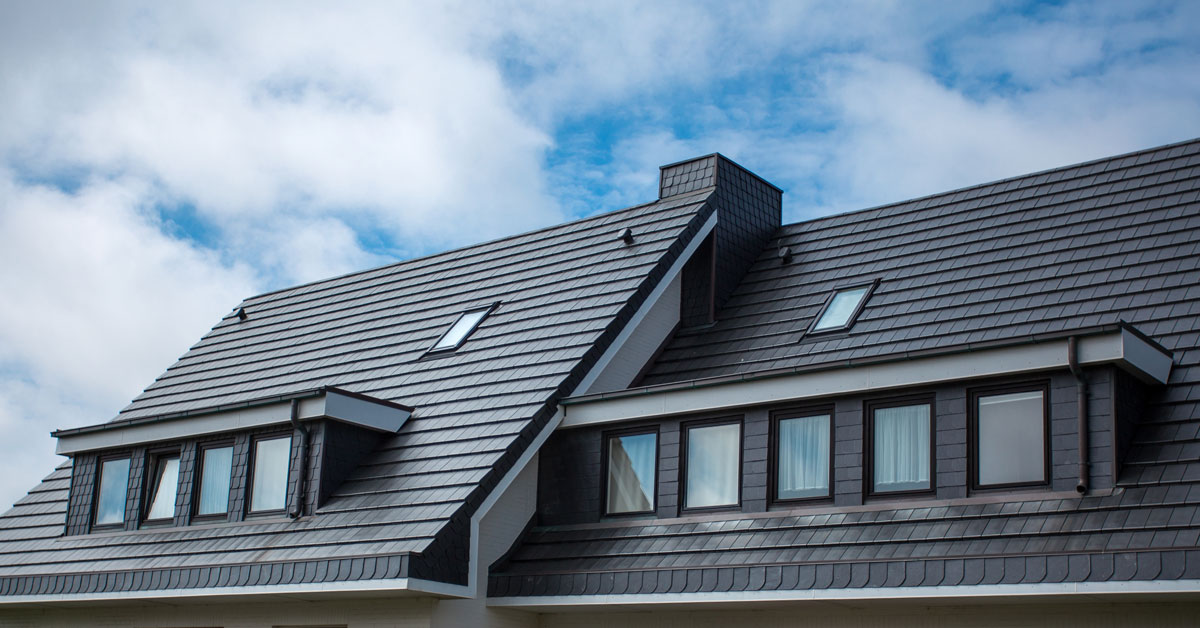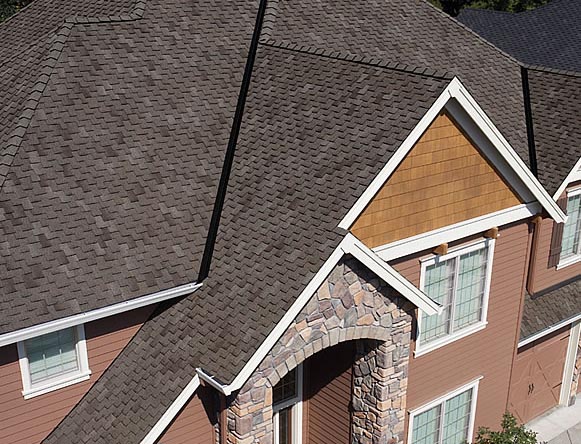The Relevance of Selecting Skilled Roofing Companies Gainesville Florida
Wiki Article
Ideal Practices for Ensuring Appropriate Roof Covering Ventilation
A well balanced consumption and exhaust air vent proportion, commonly 1:300, plays an essential role, with consumption vents ideally placed at the lower edge of the roofing for amazing air entrance and exhaust vents at the optimal for warm air leave. Keeping insulation away from vents is vital to protect against air flow limitation.Understand Ventilation Essentials
Correctly comprehending air flow fundamentals is important for guaranteeing the long life and performance of roofing systems. Effective air flow mitigates wetness build-up and temperature extremes in the attic, both of which can cause substantial architectural damage in time. A well-ventilated roofing assists in stopping typical problems such as mold and mildew growth, timber rot, and ice dams, which can endanger the honesty of the roof covering products and the underlying frameworks.The key objective of ventilation is to assist in the activity of air, permitting a consistent exchange between the interior and outdoor environments. This balance is accomplished via a mix of intake and exhaust vents that collaborate to preserve optimum airflow. Consumption vents, usually situated along the eaves or soffits, permit fresh air to get in the attic room, while exhaust vents, usually situated at or near the roofing system ridge, enable warm, humid air to leave.
Key elements affecting the performance of roof air flow include proper positioning, adequate sizing, and guaranteeing that both intake and exhaust vents are unobstructed. Regular assessment and upkeep are crucial to identify prospective obstructions, damages, or inadequacies in the air flow system, consequently protecting the roofing's performance and resilience.
Kinds Of Roofing System Vents
Roof covering vents play an essential duty in keeping reliable attic ventilation and, by extension, the total health and wellness of the roof. Numerous types of roof vents are offered, each with special advantages customized to specific roofing requirements. Ridge vents, for instance, are installed along the roof's optimal, allowing cozy, humid air to escape from the attic. They use continuous air flow and blend flawlessly with the roofline, making them both efficient and cosmetically pleasing.
Soffit vents are installed under the eaves and operate in tandem with roofing vents to make sure a balanced consumption and exhaust system. By allowing cooler air to enter from below, soffit vents facilitate the expulsion of hot air through top vents. Gable vents, located on the outside wall surfaces of the attic, deal another efficient service, especially in homes with gable roof coverings.
Assess Your Current Air Flow

Following, think about the age and problem of your roofing materials and ventilation components. Older systems might not follow present structure codes or might have weakened in time, reducing their efficiency. Conduct a thorough assessment to determine any indications of wear and tear, such as rust, damages, or spaces that might compromise the system's efficiency.
Additionally, measure the attic room temperature level and humidity levels. High temperatures and moisture can show insufficient ventilation - gainesville roofing companies. Use a hygrometer and thermostat to acquire precise readings, contrasting them with outside problems. Consistent discrepancies suggest possible concerns that require addressing.
Setup Best Practices
Effective setup of roof covering ventilation systems is paramount for guaranteeing ideal efficiency and longevity. Appropriate installment begins with understanding the particular ventilation demands of the structure and the roofing system it covers. This includes computing the appropriate ratio of intake to wear down vents, usually adhering to the 1:300 regulation, which specifies one square foot of Click Here ventilation for each 300 square feet of attic flooring room.
Consumption vents need to be installed at the roof's reduced side, frequently in the soffits, to enable cool air to get in. Exhaust vents, on the other hand, need to be mounted near or at the roof covering's peak to facilitate the leave of warm, wet air.
Seal all vent connections thoroughly to avoid air leakages and potential water seepage. Usage high-quality products and adhere to manufacturer guidelines to make sure toughness and effectiveness. Furthermore, integrating ridge vents with baffles can significantly enhance air flow performance by protecting against wind-driven rainfall and snow from entering the attic room.
Ultimately, exact installment of roof covering air flow systems alleviates possible issues such as mold and mildew growth, ice dams, and structural damages, making certain the roofing system's honesty and the structure's overall health.
Normal Maintenance Tips
Consistency in maintenance methods is fundamental to ensuring the long-lasting performance of roof air flow systems. During these examinations, make sure that vents are complimentary of particles, nests, and other blockages that can hinder airflow.
Cleaning up the vents is an additional essential task. Make use of a soft brush or a vacuum cleaner to eliminate dirt and debris from consumption and exhaust vents. Beware not to harm the vent displays or louvers throughout the procedure. Additionally, evaluate the attic area for any kind of indications of water damages, which can jeopardize the stability of the roof covering system.
Proper insulation is just as crucial. Make sure that attic room insulation does not obstruct the vents, as this can seriously restrict airflow. Reposition or replace it to preserve a reliable barrier. if any kind of insulation has actually shifted or cleared up.
Last but not least, change any kind of damaged or missing out on elements immediately. Busted vents, broken roof shingles, or scrubby blinking can all add to inadequate ventilation and needs to be attended to right away. Routine upkeep makes sure look these up that the roofing ventilation system operates efficiently, therefore extending the lifespan of the roofing system itself.
Final Thought
Making sure proper go to my blog roof covering air flow is vital for preserving the performance and durability of a roof covering system. Adherence to the 1:300 consumption and exhaust air vent ratio, combined with the tactical positioning of vents, is necessary. Routine semiannual evaluations, particles cleaning, and making sure insulation does not obstruct airflow are crucial practices. Implementing these finest techniques will cultivate a well-ventilated roof, thus minimizing prospective problems associated with moisture accumulation and too much warmth, ultimately extending the roof covering's lifespan.A well balanced intake and exhaust vent ratio, typically 1:300, plays a pivotal function, with consumption vents ideally positioned at the reduced edge of the roof covering for trendy air entrance and exhaust vents at the optimal for warm air exit. Intake vents, generally located along the soffits or eaves, permit fresh air to get in the attic room area, while exhaust vents, typically located at or near the roof ridge, enable warm, humid air to get away.
Soffit vents are installed under the eaves and job in tandem with roof vents to make certain a balanced intake and exhaust system. By allowing cooler air to enter from below, soffit vents assist in the expulsion of warm air via top vents. Adherence to the 1:300 intake and exhaust air vent proportion, combined with the critical placement of vents, is crucial.
Report this wiki page